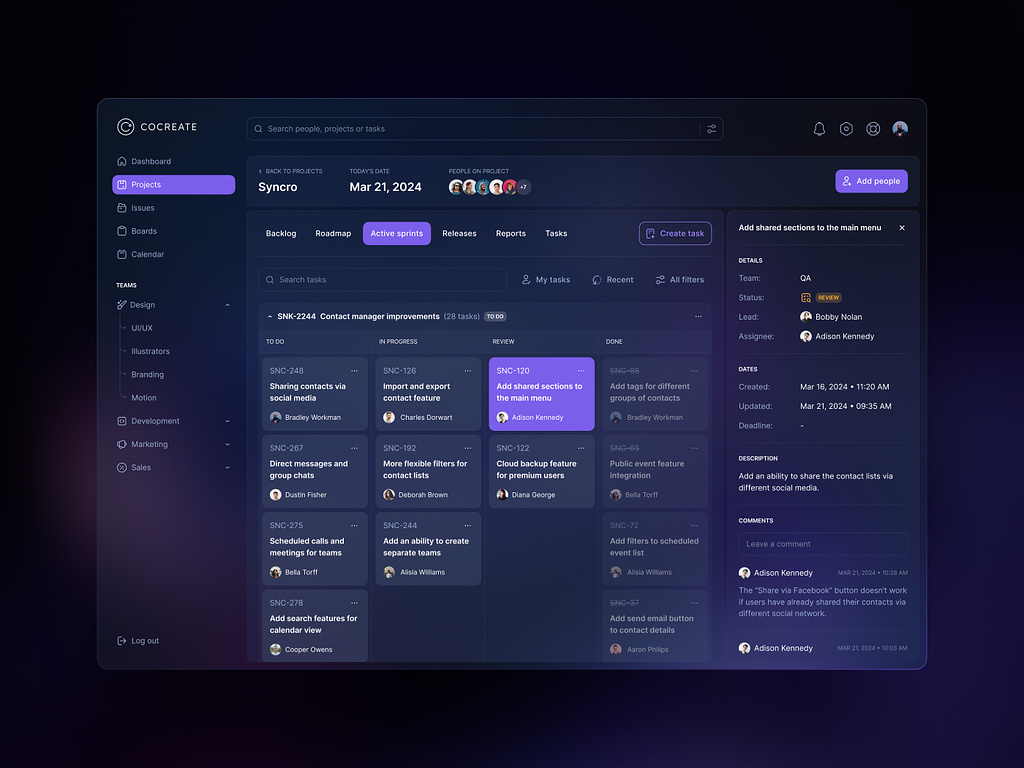Are you tired of constant debugging, long testing phases, and the never-ending cycle of fixing bugs in your code? It drains your energy and brings you closer to burning out. We fell into the same pitfalls, so we know how it feels. However, there is a solution that could save you time, reduce errors, and improve the overall quality of your code — Test Driven Development (TDD).
Contents:
In this article, we will explore the approach, its meaning, and the numerous benefits it can bring to your development process. Join us on this journey to discover how the methodology can revolutionize your workflow and take your coding skills to the next level.
Let’s explain test driven development principles first.
What is TDD in Software Development?
It is a software development methodology that focuses on writing tests before writing the actual code. The tests serve as a guide for identifying potential problems before the production phase starts. The main idea is to ensure that the code is correct, maintainable, and performs as expected by continuously writing and running automated tests throughout the development process.
With this methodology, you encourage your team to focus on writing clean, modular, and testable code that meets the specified requirements. It helps in improving code quality, reducing bugs, enabling faster feedback loops, and promoting a more iterative and incremental approach to software development.
Test Driven Development Process
It typically follows these steps:
Red phase: The first step in TDD is to write a test that describes the desired functionality of the code. Don’t worry – they initially fail because the implementation is yet to be created. Your goal at this stage is to define the desired behavior and features for implementation.
Green phase: The next step is to write the simplest code that will make the test pass. The code should only do what is necessary to satisfy the test and nothing more. So keep it as simple as possible, no need to overdo it.
Refactor phase: Once the test is passed, you can refactor the code to improve its design, readability, and maintainability. Finally, you need to rerun the tests to make sure that everything works as intended.
Repeat the TDD testing for each new feature or functionality that needs to be implemented. This iterative cycle helps to ensure that the code is thoroughly tested, incrementally developed and meets the requirements specified by the tests.

Mobile Banking App by Shakuro
Importance of Test-Driven Development
It helps improve software quality by encouraging you to think about and define the expected behavior of the code before writing. The approach forces developers to consider edge cases and potential bugs early in the development process, leading to more robust and reliable code.
What’s more, the tests serve as living documentation for the codebase. They describe the expected behavior and serve as a reference point for future developers who need to dive in quickly.
While it may seem counterintuitive, the methodology can improve overall productivity in the long run. You focus on creating new features and delivering value to the end-users. This way, you also ensure that the software meets the desired requirements and expectations.
Benefits of TDD in Software Development
- Improved code quality: it encourages your team to write tests to validate their code against specific requirements. This results in cleaner, more maintainable code that is less prone to errors and bugs.
- Faster feedback loop: you have immediate feedback on the functionality you are implementing. If a test fails, you know there is an issue that needs to be addressed immediately, making debugging more efficient.
- Better design: TDD development forces you to think about the design and architecture of your code upfront. Writing the tests before writing the code helps in creating more modular, loosely coupled systems, improving overall design quality.
- Increased confidence: when you have a comprehensive suite of tests that validate the codebase, your team and stakeholders gain confidence in the system’s reliability. This confidence allows for easier integration of new features and refactoring of existing code.
- Cost-effective: while the approach requires an initial time investment to write tests, it often results in fewer defects and bugs, reducing the need for extensive debugging and maintenance in the long run. So, ultimately, you save time and costs associated with fixing issues post-release.
- Faster development: TDD can lead to faster development cycles as you spend less time debugging and fixing issues. The rapid feedback loop helps you make immediate changes and iterate quickly.
Limitations of Test Driven Development
There are several advantages, such as producing cleaner code, improved design, and faster feedback loops. However, test driven development in software testing also has limitations and challenges:
- Initial learning curve: you will have to adopt a new way of working, which may have a steeper learning curve for those unfamiliar with the methodology. As a result, there can be resistance from team members who are not accustomed to writing tests before code.
- Time-consuming: writing tests before implementing the actual code can be time-consuming at first, especially for complex systems or in the initial stages of a project. This can lead to delays in development, as more time is spent on writing tests.
- Overhead: maintaining a comprehensive suite of tests alongside the codebase introduces additional overhead, as any changes or updates to the code may require corresponding changes to the tests. This overhead can increase the overall development time and effort.
- Design constraints: test driven development focuses on writing tests that validate the behavior of small units of code. It sometimes makes people focus on individual components rather than considering the overall design or system architecture. You might face a lack of a holistic design perspective.
- False sense of security: while the approach can increase code coverage and catch certain bugs early in the development process, it does not guarantee the absence of defects in the system. You may fall into a false sense of security, assuming that passing these tests equates to bug-free software.
- Refactoring challenges: refactoring code can sometimes be challenging, especially if the existing test suite needs to be more robust or when making significant changes to the codebase. You may have to spend a lot of time rewriting or updating a large number of tests.
- Dependency on testing tools: TDD relies heavily on testing frameworks and tools to automate the testing process. This dependency can be a limitation, especially if there are compatibility issues or limitations with the testing tools.
Despite these limitations, many developers find the approach to be a valuable practice for improving code quality and maintainability. It is essential to weigh all the advantages and limitations to determine if it is the right approach for your project.

Contact Manager App Design Concept by Conceptzilla
TDD in Agile Development
In agile development, TDD testing is particularly valuable as it helps maintain a sustainable pace. By continuously writing tests and code in small increments, you can catch bugs early in the development process, leading to higher-quality code. TDD also allows for easier integration of new features and reduces the likelihood of introducing regressions in the codebase.
Together with Agile, it promotes a more disciplined and iterative approach to software development, resulting in a more reliable and maintainable codebase. It is a fundamental practice that can greatly benefit software development teams striving to deliver high-quality software collaboratively and efficiently.
Best Frameworks for Test Driven Development
There are several popular and widely used frameworks for TDD across various programming languages. Some of the best frameworks include:
- JUnit (Java): a popular testing framework for Java. It provides annotations for writing test methods and assertions for verifying the expected results.
- NUnit (C#): a unit testing framework for .NET applications written in C#. It supports TDD and provides a range of attributes and assertions for writing and executing tests.
- RSpec (Ruby): a testing tool for Ruby. It allows developers to write specifications and expectations in a human-readable format.
- PyTest (Python): a testing framework for Python. It offers a simple syntax for writing tests and assertions, making it easy to write and execute tests.
- Mocha (JavaScript): a popular testing framework for JavaScriptD. It provides a flexible and feature-rich environment for writing and running tests for Node.js and browser-based applications.
- PHPUnit (PHP): a unit testing framework for PHP. It offers a range of assertion methods and features for writing test cases and executing them.
- Cucumber (Various languages): a testing framework commonly used for behavior-driven development (BDD). It allows developers to write tests in a human-readable language and automate the validation of application behavior.
Comparison: TDD Vs. Traditional Testing
Test driven development focuses on writing tests before writing code, continuous testing, and smaller granularity, while traditional testing involves testing after code development, testing larger modules, and potentially longer feedback loops. Both approaches have their merits and can be used based on the requirements and constraints of the project.
- Approach:
– TDD: the development process begins with writing a failing test case that defines the desired functionality. You write and modify the code to pass the test and repeat the cycle for each new feature or functionality.
– Traditional testing: you develop the code, and then build test cases to verify the functionality and identify any defects in the code.
- Timing:
– TDD: test continuously throughout the development process, with tests being written before or simultaneously with the code. This way you catch bugs early in the development cycle.
– Traditional testing: here, you test the app after the code has been developed. The code is tested against predefined test cases to identify any defects.
- Granularity:
– TDD: it focuses on small units of code. You write tests for each unit, helping in isolating and fixing issues in the code.
– Traditional testing: this approach involves testing the entire application or specific modules, which makes it harder to pinpoint the root cause of an issue.
- Feedback loop:
– TDD: your devs have instant feedback as failing tests indicate an issue with the code. This immediate feedback loop helps in identifying and fixing bugs quickly.
– Traditional testing: it has a longer feedback loop as you do testing after developing the code. So you might have delays in finding and eliminating bugs.
- Developer involvement:
– TDD: as a developer, you have to invest time in writing tests and code. What’s more, you need to understand the requirements and design principles to create effective tests.
– Traditional testing: dedicated testers will be responsible for writing test cases and identifying defects in the code.

Team Management UI Design Concept by
Shakuro
Examples of Test Driven Development (TDD)
- Login system: Write a failing test to check if a user can log in with valid credentials. Implement the login functionality to pass the test. Then, write tests for handling invalid logins, password reset, and user authentication scenarios.
- Weather app: Create tests for fetching weather data from an external API. Build failing tests for different weather conditions like sunny, rainy, and snowy. Finally, implement the functionality to retrieve and display the weather information.
- To-do list application: Start with failing tests for adding tasks to a to-do list. Implement the necessary code to pass the tests. Create additional tests for marking tasks as completed, deleting tasks, and filtering tasks based on their status.
Conclusion
Now that you’ve learned TDD meaning, time to put the knowledge into practice. By writing tests before writing the actual code, your team ensures that their code is more robust and resilient to bugs, leading to higher-quality software. This way, you also encourage developers to think through their logic thoroughly before implementation. However, it’s important to start by writing the smallest possible test case to drive the development process.
Need to develop software using the latest technologies and approaches? Contact us and let’s create your next project together.

